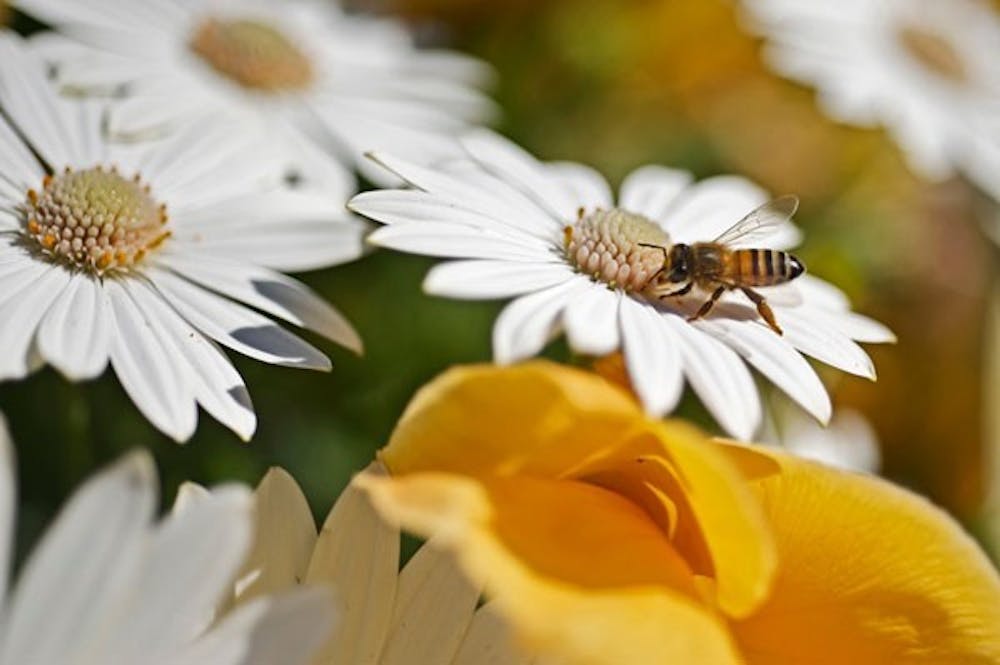You might be comfortable seeing a bee or two this time of year, but for some students on the Polytechnic campus, seeing a million bees in a day is perfectly normal.
The 21 students working at Polytechnic’s Bee Lab Annex are guaranteed to work with at least a million bees, though they don’t have much to worry about there.
Osman Kaftanoglu, who manages the nearly 100 bee colonies at the Annex, said in addition to the science of bees, students at the Annex learn many of the more practical aspects of beekeeping so the bees don’t become defensive and sting.
Kaftanoglu has been researching and keeping bees for more than 30 years, joining the ASU bee research team in 2005.
Lauren Tomlin, an ASU botany junior and one of the students at the Annex, heard about the class on bees and thought it “sounded amazing.”
Tomlin said her grandfather and father were beekeepers and that her botany studies complement what she’s learning at the Annex.
“The things that we’ve been learning, they’re amazing,” Tomlin said.
One area of beekeeping Tomlin is fascinated by is the “instrumental insemination” of queen bees.
“You can actually mass produce queen bees, which is very lucrative right now,” Tomlin said.
Instrumental inseminating of the queen bee is one of the practical aspects of bee keeping in which students are introduced, Kaftanoglu said.
Because of the recent introduction of Africanized bees into the Southwest, instrumental insemination of queen bees is one of the techniques used by the Annex to maintain the gentler European bee colonies, Kaftanoglu said.
The Annex is part of what ASU’s School of Life Sciences Dean Robert E. Page Jr. calls the social insect research group, or SIRG. However, Page points out that it’s not an official group.
“It’s good not to be official … we have a great group of graduate students and post-docs that work there … they feel like they’re a real cohort that works together,” Page said.
On the Tempe campus there is a total of 10 faculty members who work on social insects, five of whom focus solely on honeybees, Page said.
Page himself studies behavioral genetics using bees, although SIRG includes people who are working with other insects. Bert Hölldobler, who works with ants and ant colonies, won the Pulitzer Prize for his book titled “The Ants.”
SIRG researchers study bees, ants, wasps and termites. Page referred to these insects as the primary social insects for research at ASU.
“We have a real social insect focus here at ASU … that covers everything from genes to complex societies,” Page said.
And much like the insects SIRG studies, Page said SIRG is a cohesive group that no other insect research group comes close to.
Reach the reporter at cbleone@asu.edu





